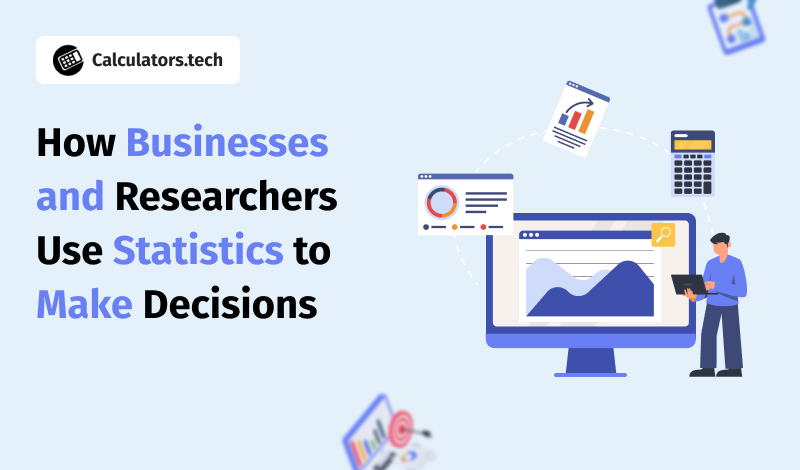Every choice, whether it's picking a new product to sell or testing a groundbreaking medical treatment, boils down to one thing: solid data. Sure, gut feelings have their place, but smart decisions come from stats, not guesswork. From students to CEOs, understanding how numbers shape decisions can be a game-changer.
And what better way to sharpen those skills than diving into some hands-on statistics project ideas? Real-world problems meet real data, and suddenly, stats aren’t just numbers but the secret weapon for making smarter moves.
Why Statistics Matter in Decision-Making
Statistics help turn raw numbers into useful insights. Instead of guessing which marketing strategy will bring in more customers, businesses can analyze data to see what has worked before. Researchers, on the other hand, rely on statistics to test hypotheses and determine whether their findings are significant. Without statistics, decision-making would be a shot in the dark.
How Businesses Use Statistics
1. Market Research and Consumer Behavior
Businesses use surveys, sales data, and social media trends to understand what customers want. By analyzing this data, they can predict which products will sell well and which marketing campaigns will be most effective. For example, a clothing brand might use customer purchase data to decide which colors and styles to stock for the next season.
2. A/B Testing for Marketing Strategies
A/B testing is a statistical method that helps companies compare two versions of a product, advertisement, or website to see which performs better. For instance, an online retailer might test two different email subject lines to see which one gets more people to open the message. By collecting data and analyzing the results, businesses can optimize their marketing strategies for better engagement and sales.
3. Quality Control in Manufacturing
Factories use statistical methods to monitor production quality. They take random samples from their production lines and use statistical analysis to determine if a batch of products meets their standards. If the error rate exceeds a certain threshold, they can adjust their processes before faulty products reach customers.
4. Financial Forecasting and Risk Analysis
Businesses rely on past financial data and statistical models to predict future earnings and identify potential risks. Banks, for example, use statistics to evaluate loan applicants and determine the likelihood of repayment. Investment firms analyze stock market trends to guide trading strategies and minimize losses.
How Researchers Use Statistics
1. Designing Experiments and Studies
Researchers in science, medicine, and social sciences use statistical methods to design experiments and ensure their results are reliable. When testing a new drug, for example, scientists use statistical sampling to select participants and randomization to ensure unbiased results.
2. Analyzing Data for Meaningful Conclusions
Once researchers collect data, they apply statistical tests to determine patterns and relationships. In psychology, for example, researchers might analyze survey responses to see if stress levels correlate with productivity. Without statistics, it would be difficult to tell whether observed effects are meaningful or just due to random chance.
3. Making Predictions Based on Data Trends
Statistical models allow researchers to make predictions based on existing data. Climate scientists, for example, use historical weather patterns and statistical models to predict future temperature changes and extreme weather events. Epidemiologists use statistics to forecast the spread of diseases and recommend public health interventions.
4. Measuring Uncertainty and Confidence Levels
Statistical tools like confidence intervals and p-values help researchers measure the reliability of their findings. In medicine, for instance, a new treatment might show promising results, but researchers must determine if the improvement is statistically significant or just occurred by chance. These calculations help ensure that scientific discoveries are based on solid evidence.
The Power of Data-Driven Decisions
Statistics don’t just help businesses and researchers, they impact daily life. From the algorithms that recommend products online to the studies that shape public policies, statistical analysis influences countless aspects of modern society. Learning to understand and interpret data is a valuable skill that can help individuals make smarter choices in any field.
Instead of relying on assumptions, businesses and researchers use statistics to minimize risks, identify opportunities, and create better outcomes. Whether it’s a company testing a new ad campaign or a scientist evaluating a medical breakthrough, statistics ensure that decisions are based on evidence rather than guesswork.
In an increasingly data-driven world, knowing how to use statistics effectively can give anyone an edge, whether in business, research, or everyday problem-solving.
